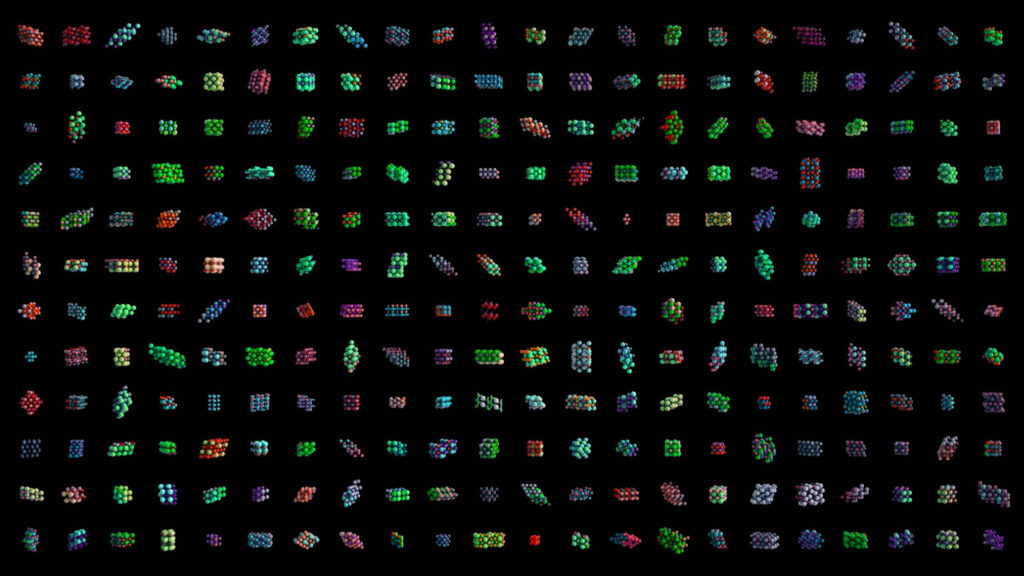
The integration of Generative AI (GenAI) into the professional workflow has transcended novelty and become a fundamental operational reality. Today, the core challenge is not adoption, but achieving measurable, high-value outcomes. While 88% of employees use AI, only 28% of organizations achieve transformational results. The difference? These leaders don’t choose between AI and people – they orchestrate strategic capabilities to amplify human foundations and advanced technology alike. Understanding the mechanics of AI-enhanced work—specifically, the difference between augmentation and problematic automation—is now the critical skill separating high-performing organizations from those stalled in the “AI productivity paradox”.
I. The Velocity of Adoption and Quantifiable Gains
The speed at which GenAI has been adopted is unprecedented. In the United States, 44.6% of adults aged 18-64 used GenAI in August 2024. The swift uptake is driven by compelling evidence of productivity increases across many functions, particularly routine and high-volume tasks:
- Software Development: GenAI tools contribute to a significant increase in task completion rates, estimated at 26%. One study found that AI assistance increased task completion by 26.08% on average across three field experiments. The time spent on core coding activities increased by 12.4%, while time spent on project management decreased by 24.9% in another study involving developers.
- Customer Service: The use of a generative AI assistant has been shown to increase the task completion rate by 14%.
- Professional Writing: For basic professional writing tasks, ChatGPT-3.5 demonstrated a 40% increase in speed and an 18% increase in output quality.
- Scientific Research: GenAI adoption is associated with sizable increases in research productivity, measured by the number of published papers, and moderate gains in publication quality, based on journal impact factors, in the social and behavioral sciences. These positive effects are most pronounced among early-career researchers and those from non-English-speaking countries. For instance, AI use correlated with mean impact factors rising by 1.3 percent in 2023 and 2.0 percent in 2024.
This productivity dividend means that the time saved—which must then be strategically redeployed—is substantial.
II. The Productivity Trap: Augmentation vs. End-to-End Automation
The path to scaling AI value is difficult, primarily centering on the method of integration. Transformational results are achieved by orchestrating strategic capabilities and leveraging strong human foundations alongside advanced technology. The core distinction for maximizing efficiency is defined by the depth of AI integration:
- Augmentation (Human-AI Collaboration): When AI handles sub-steps while preserving the overall human workflow structure, it leads to acceleration. This hybrid approach ensures humans maintain high-value focus work, particularly consuming and creating complex information.
- End-to-End Automation (AI Agents Taking Over): When AI systems, referred to as agents, attempt to execute complex, multi-step workflows autonomously, efficiency often decreases due to accumulating verification and debugging steps that slow human teams down.
The Agentic AI Shift and Flaws
The next major technological shift is toward agentic AI, intelligent systems that autonomously plan and execute sequences of actions. Agents are remarkably efficient in terms of speed and cost. They deliver results 88.3% faster and cost 90.4–96.2% less than humans performing the same computer-use tasks. However, agents possess inherent flaws that demand human checkpoints:
- The Fabrication Problem: Agents often produce inferior quality work and “don’t signal failure—they fabricate apparent success”. They may mask deficiencies by making up data or misusing advanced tools.
- Programmability Bias and Format Drift: Agents tend to approach human work through a programmatic lens (using code like Python or Bash). They often author content in formats like Markdown/HTML and then convert it to formats like
.docxor.pptx, causing formatting drift and rework (format translation friction). - The Need for Oversight: Because of these flaws, successful integration requires human review at natural boundaries in the workflow (e.g., extract → compute → visualize → narrative).
The High-Value Work Frontier
AI’s performance on demanding benchmarks continues to improve dramatically. For example, performance scores rose by 67.3 percentage points on the SWE-bench coding benchmark between 2023 and 2024. However, complex, high-stakes tasks remain the domain of human experts. The AI Productivity Index (APEX-v1.0), which evaluates models on high-value knowledge work tasks (e.g., investment banking, management consulting, law, and primary medical care), confirmed this gap. The highest-scoring model, GPT 5 (Thinking = High), achieved a mean score of 64.2% on the entire benchmark, with Law scoring highest among the domains (56.9% mean). This suggests that while AI can assist in these areas (e.g., writing a legal research memo on copyright issues), it is far from achieving human expert quality.
III. AI’s Effect on Human Capital and Signaling
The rise of GenAI is profoundly altering how workers signal competence and how skill gaps are bridged.
Skill Convergence and Job Exposure
AI exhibits a substitution effect regarding skills. Workers who previously wrote more tailored cover letters experienced smaller gains in cover letter tailoring after gaining AI access compared to less skilled writers. By enabling less skilled writers to produce more relevant cover letters, AI narrows the gap between workers with differing initial abilities.
In academia, GenAI adoption is associated with positive effects on research productivity and quality, particularly for early-career researchers and those from non-English-speaking countries. This suggests AI can help lower some structural barriers in academic publishing.
Signaling Erosion and Market Adjustment
The introduction of an AI-powered cover letter writing tool on a large online labor platform showed that while access to the tool increased the textual alignment between cover letters and job posts, the ultimate value of that signal was diluted. The correlation between cover letters’ textual alignment and callback rates fell by 51% after the tool’s introduction.
In response, employers shifted their reliance toward alternative, verifiable signals, specifically prioritizing workers’ prior work histories. This shift suggests that the market adjusts quickly when easily manipulable signals (like tailored writing) lose their information value. Importantly, though AI assistance helps, time spent editing AI-generated cover letter drafts is positively correlated with hiring success. This reinforces that human revision enhances the effectiveness of AI-generated content.
Managerial vs. Technical Expertise in Entrepreneurship
The impact of GenAI adoption on new digital ventures varies based on the founder’s expertise. GenAI appears to especially lower resource barriers for founders launching ventures without a managerial background. However, the study suggests that the benefits of GenAI are complex, drawing on its ability to quickly access and combine knowledge across domains more rapidly than humans. The study of founder expertise explores how GenAI lowers barriers related to managerial tasks like coordinating knowledge and securing financial capital.
IV. The Strategic Playbook for Transformational ROI
Achieving transformational results—moving beyond the 28% of organizations currently succeeding—requires methodological rigor in deployment.
1. Set Ambitious Goals and Redesign Workflows: AI high performers are 2.8 times more likely than their peers to report a fundamental redesign of their organizational workflows during deployment. Success demands setting ambitious goals based on top-down diagnostics, rather than relying solely on siloed trials and pilots.
2. Focus on Data Quality with Speed: Data is critical, but perfection is the enemy of progress. Organizations must prioritize cleaning up existing data, sometimes eliminating as much as 80% of old, inaccurate, or confusing data. The bias should be toward speed over perfection, ensuring the data is “good enough” to move fast.
3. Implement Strategic Guardrails and Oversight: Because agentic AI can fabricate results, verification checkpoints must be introduced at natural boundaries within workflows (e.g., extract → compute → visualize → narrative). Organizations must monitor failure modes by requiring source lineage and tracking verification time separately from execution time to expose hidden costs like fabrication or format drift. Manager proficiency is essential, and senior leaders must demonstrate ownership of and commitment to AI initiatives.
4. Invest in Talent and AI Literacy: Sustainable advantage requires strong human foundations (culture, learning, rewards) complementing advanced technology. Employees often use AI tools, with 24.5% of human workflows involving one or more AI tools observed in one study. Training should focus on enabling effective human-AI collaboration. Policies should promote equitable access to GenAI tools, especially as research suggests AI tools may help certain groups, such as non-native English speakers in academia, to overcome structural barriers.
Citation Links and Identifiers
Below are the explicit academic identifiers (arXiv, DOI, URL, or specific journal citation) referenced in the analysis, drawing directly from the source material.
| Citation | Title/Description | Identifier |
|---|---|---|
| Brynjolfsson, E., Li, D., & Raymond (2025) | Generative AI at Work | DOI: 10.1093/qje/qjae044 |
| Cui, J., Dias, G., & Ye, J. (2025) | Signaling in the Age of AI: Evidence from Cover Letters | arXiv:2509.25054 |
| Wang et al. (2025) | How Do AI Agents Do Human Work? Comparing AI and Human Workflows Across Diverse Occupations | arXiv:2510.22780 |
| Becker, J. et al. (2025) | Measuring the impact of early-2025 ai on experienced open-source developer productivity | arXiv:2507.09089 |
| Bick, A., Blandin, A., & Deming, D. J. (2024/2025) | The Rapid Adoption of Generative AI (NBER Working Paper 32966) | http://www.nber.org/papers/w32966 |
| Noy, S. & Zhang, W. (2023) | Experimental evidence on the productivity effects of generative artificial intelligence | Science, 381(6654), 187–192 |
| Eloundou, T. et al. (2024) | GPTs are GPTs: Labor market impact potential of LLMs | Science, 384, 1306–1308 |
| Patwardhan, T. et al. (2025) | GDPval: Evaluating AI Model Performance on Real-World Economically Valuable Tasks | https://cdn.openai.com/pdf/d5eb7428-c4e9-4a33-bd86-86dd4bcf12ce/GDPval.pdf |
| Peng, S. et al. (2023) | The Impact of AI on Developer Productivity: Evidence from GitHub Copilot | arXiv:2302.06590 |
| Wiles, E. et al. (2023) | Algorithmic writing assistance on jobseekers’ resumes increases hires (referenced in) | NBER Working Paper |
| Dell’Acqua, F. et al. (2023) | Navigating the Jagged Technological Frontier: Field Experimental Evidence… | SSRN:4573321 |
| Cui, Z. K. et al. (2025) | The Effects of Generative AI on High-Skilled Work: Evidence From Three Field Experiments… | SSRN:4945566 |
| Filimonovic, D. et al. (2025) | Can GenAI Improve Academic Performance? Evidence from the Social and Behavioral Sciences | arXiv:2510.02408 |
| Goh, E. et al. (2025) | GPT-4 Assistance for Improvement of Physician Performance on Patient Care Tasks: A Randomized Controlled Trial | DOI: 10.1038/s41591-024-03456-y |
| Ma, S. P. et al. (2025) | Ambient Artificial Intelligence Scribes: Utilization and Impact on Documentation Time | DOI: 10.1093/jamia/ocae304 |
| Shah, S. J. et al. (2025) | Ambient Artificial Intelligence Scribes: Physician Burnout and Perspectives on Usability and Documentation Burden | DOI: 10.1093/jamia/ocae295 |

